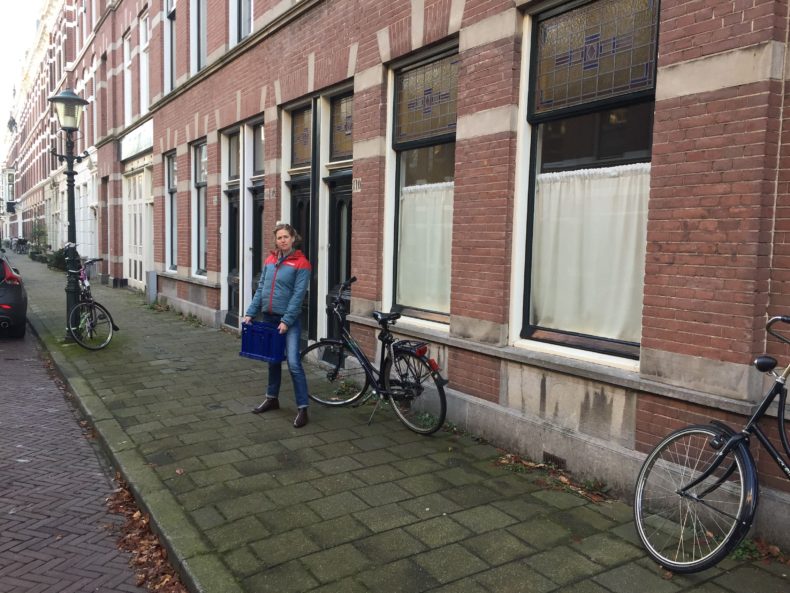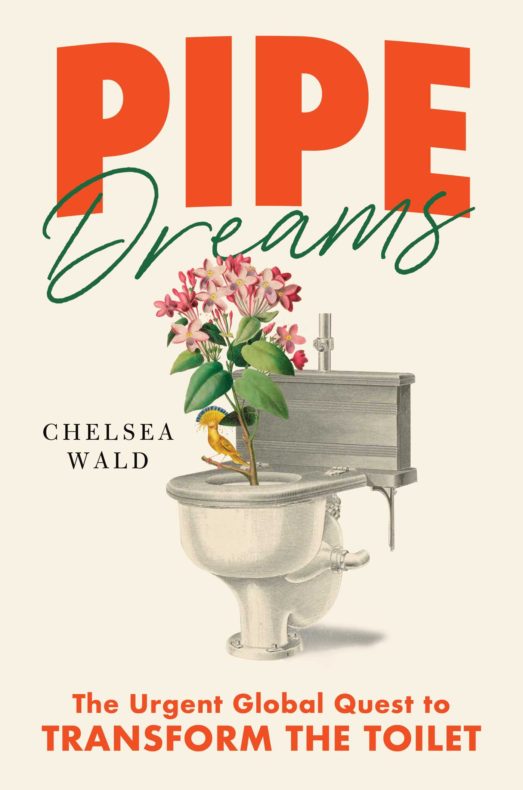
When I was a few weeks pregnant, I met a new friend, who is an expert in sanitation for low-resource contexts, for coffee in The Hague, where I live. I hadn’t told her about my status, but she must have gotten some whiff of a pheromone or something because she mentioned, off-handedly, that a program in the Netherlands collects pregnant people’s urine.
I hurried home to sign up. Amazingly, the program, today called Moeders voor Moeders (Mothers for Mothers), has been operating since 1931. The hormone they’re after is human chorionic gonadotropin (hCG), which peaks in early pregnancy. It’s most famous for making the second line on pregnancy tests, but it can also stimulate ovulation as part of a regimen of fertility drugs.
I had struggled to get and stay pregnant, a painful experience. If my urine could help another person, this seemed like something worth participating in, I thought. Plus, I had been covering sanitation as a journalist, and was thinking of writing a book, which later became Pipe Dreams: The Urgent Global Quest to Transform the Toilet, just released.
What I didn’t anticipate was how hoarding my urine would transform my relationship to it.
Many ancient cultures kept and used urine. The ancient Roman Columella suggested watering pomegranate trees with the nutrient-rich liquid. In Braiding Sweetgrass, botanist Robin Wall Kimmerer, a member of the Citizen Potawatomi Nation, writes, “I’m told that our ancestors would put the squash seeds in a deerskin bag with a little water or urine a week before planting to try to hurry them along.”
Some cultures used urine in tanning, laundering, felting, dyeing, and even making gunpowder, mouthwash and toothpaste. One intriguing detail that many people (including me) remember from Jean M. Auel’s Earth’s Children series is how Ice Age people could have used aged urine, which has a high pH, to make white leather. Indeed, urine was once so valuable that the Roman Emperor Vaspasian famously levied a tax on public urinals, from which comes the term pecunia non olet, “money doesn’t stink.”
Today, however, we treat urine as just another gross squirt of bodily waste–and that’s more or less how I thought of it, too. Our toilets dilute it with water, mix it with poop and toilet paper, and shoot it into our sewers, where it meets more water, cooking oils, cleaning supplies, industrial chemicals, and other substances. Not only does this make it harder to recover the useful elements of urine, but it also potentially turns them into pollution. Nitrogen and phosphorus, if not removed during sewage treatment, can contribute to environmental problems such as dead zones in coastal areas.
A few bold innovators are trying to save urine from that fate. The Rich Earth Institute in Brattleboro, Vermont, collects it from nearly two hundred participants, pasteurizes it, and then offers it to local farmers to fertilize hay. It also publishes do-it-yourself instructions for eager gardeners. The program works with scientists to study the fertilizer’s efficacy and safety (pharmaceutical residues that people excrete in urine are a particular concern) and with regulators to develop new policies and codes. As I learned while researching my book, scientists are also developing ways to use urine to make bricks, hand sanitizer, and electricity.
Some of the Brattleboro donors use home-made urinals: Tricked-out 5-gallon jugs plugged with ping-pong balls. For Mothers for Mothers, I lovingly peed into a beige pitcher and then poured the urine into a blue jug, passing it to a driver in an unmarked van every Wednesday for several weeks. But new products will make urine collection less hands-on, such as a toilet design that uses the “teapot effect” to dribble urine down the inside of the bowl to a separate exit.
I have come to have mixed feelings about the program to which I gave my urine. Mothers for Mothers asks women to donate altruistically, as part of an “intergenerational Dutch success story, tying the previous donations of older women together with the current donations of younger, pregnant women,” as cultural analyst Charlotte Kroløkke of the University of Southern Denmark puts it in her book Global Fluids: The Cultural Politics of Reproductive Waste and Value. But, as she also points out, this is in many ways just a nice bit of marketing: The urine goes to a pharmaceutical company, which makes money when women buy the drugs, for which there are synthetic alternatives. When I spoke to someone who had used the urine-derived drug, she didn’t know where it had come from, or the free work that pregnant people like me had done on her behalf.
Still, I would gladly donate my urine again, if somebody would only come for it. My hCG has long faded, but those weeks of peeing and pouring and hoarding made their mark, transforming my mental image of my urine from icky waste into something almost precious, golden.

Chelsea Wald has a bachelor’s in astronomy from Columbia University and a master’s in journalism from Indiana University, and has spent more than fifteen years writing about science and the environment. On April 6, she released a book about the future of the toilet, called Pipe Dreams: The Urgent Global Quest to Transform the Toilet (Avid Reader Press/Simon and Schuster). You can find her at chelseawald.com, on Twitter @chelseawald, on Instagram @chelsea.wald, and on Facebook @chelseawaldwriter. Chelsea invites you to participate in her release celebration, called “It’s My (Online, Asynchronous, Book Launch) Potty!” on April 10-11, mostly on Instagram @chelsea.wald. She will (try to) make synthetic feces in her kitchen, host a toilet paper fashion show and a toilet show-and-tell, and answer questions about the book.
Strange as this may sound, I love stories that begin with a pregnant woman doing something unusual. As if in this time before motherhood, everything we do takes on an increased significance. And your actions–unlike the ones in which mothers respond to food aversions or insomnia with unusual herbs like catnip and oatstraw–directly connected your body to the lives of other mothers.
Thanks, Rachel. I’ve been thinking so much about this comment since you wrote it. I’m really glad the post touched you in much the same way that the experience touched me.